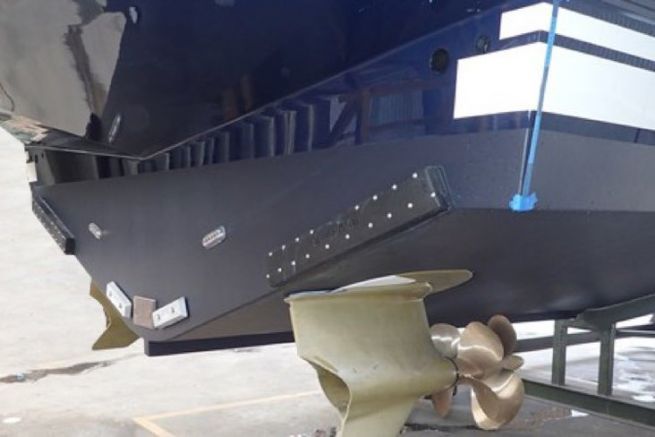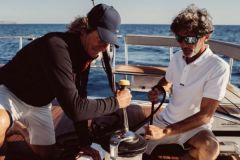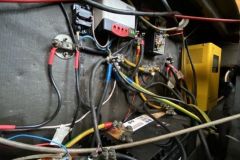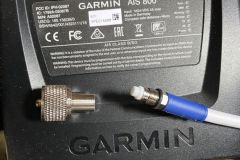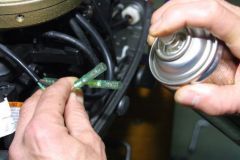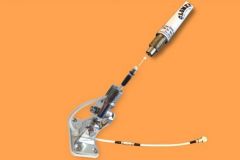The strength of the Zipwake system lies in the speed of movement of the actuators, the flaps that extend under the hull to restore the boat's trim. Their maximum stroke is 3 cm and they take 1.5 seconds to travel through them! This operating speed ensures that the boat is perfectly trimmed even in the harshest conditions.
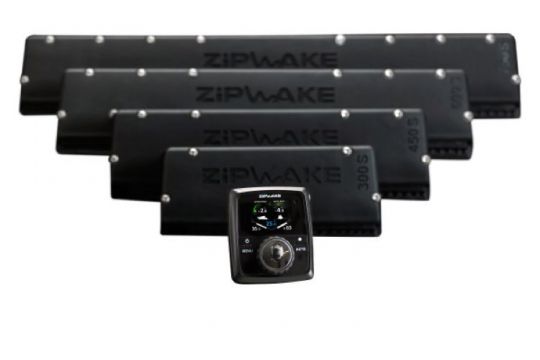
How does it work?
The Zipwake is a system of vertical flaps, placed just on the transom of a motorboat. Regardless of the engine (Z-Drive, Outboard, IPS, shaft line or even tunnel), the Zipwake flap deflects the water flow to restore trim. These flaps, which are located on either side of the boat, are independent. They can thus manage the lateral trim (boat heeling) and if it is the longitudinal trim (boat too up), it is enough to pull out both sides simultaneously.
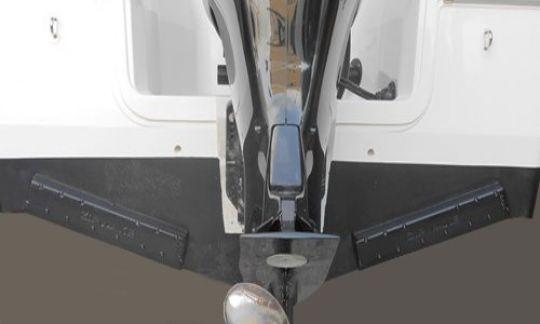
This management is done either manually or automatically. All the intelligence of the system is in its control box which integrates a GPS, gyrometric sensors and a motion controller. The onboard algorithm then automatically manages the rear flaps. It takes into account not only the boat's speed, but also the sea state, wind, pitch and roll to correct instantaneously without any intervention by the helmsman. The helmsman simply engages the Zipwake by pressing the "Auto" button.
For a perfect initialization, the system needs to enter four boat parameters (length, beam, weight and maximum speed) the first time it is used. During cruising, it is possible to make changes by playing with the keyboard to adapt the setting more precisely (if the hull or propeller gets dirty for example or if the crew is heavier than normal). The system integrates these modifications and then manages the boat with the new data.

Plug & play editing
Installing the Zipwake couldn't be easier. Simply screw the flaps to the transom and then run the cables through the hull. Each kit is delivered with its cables that plug behind the control panel. Each panel can connect up to 6 flaps (3 on each side). These flaps are available in several lengths (from 35 to 75 cm for the straight flaps), 4 types of spokes exist to adapt to the tunnels and a V-shaped flap is provided to help the hulls to the very deep V. The number of flaps is defined by the dealer who has charts depending on the boat, its motorization and the space available on the transom.
For flyboats with 2 helm stations, a second control panel can be added.

A very accessible rate
If the Zipwake has such recognition among powerboat users, it is certainly because of its efficiency, but mainly because of its price, which is very well placed compared to the competition. Indeed, a complete standard kit (S Series) with 2 flaps of 300 mm is available at 1395 euros excluding public VAT. The range fits on all boats up to 48 feet (max. speed 60 N). In other words, it covers a large part of the boats that sail on our coasts.
Note that Zipwake is expanding its range with the E Series with larger actuators, with a stroke of 6 cm. A kit designed for large boats up to 100 feet (max speed 50 N). Now super yachts can also have their Zipwake!
A gain in consumption

Of course the main interest of the Zipwake is the comfort of navigation. The boat is much more stable with the permanent regulation of the system. But there is also an energy saving. The boat consumes less fuel by no longer having to move the bow wave. The manufacturer estimates fuel savings of up to 12% depending on the configuration. A great bargain to spend less.
Distributed by VDM-Reya
A Swedish product, the Zipwake has been validated by the entire Bénéteau Group, which offers it as an option on their Flyer, Merry Fisher, Antares, Baracuda, Swift Trawler and Monte-Carlo ranges. Since 2016, VDM-Reya has been responsible for distribution in France.
